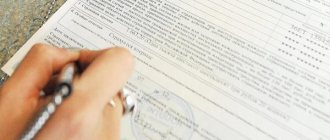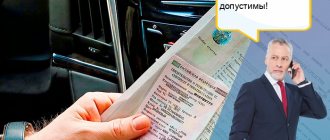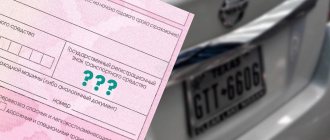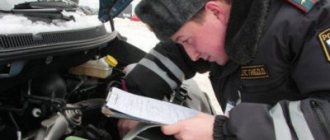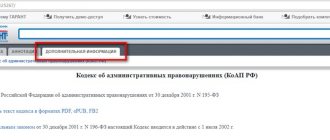Good afternoon, dear reader.
From June 1, 2021, the Rules for making changes to the design of wheeled vehicles in use have been in force in Russia. This document generally describes the stages that a car owner must go through in order to legalize changes to the design of the car. All these stages are discussed in a separate article.
Since November 17, 2021, the administrative regulations of the Ministry of Internal Affairs of the Russian Federation have been in force for the provision of public services for issuing permission to make changes to the design of a wheeled vehicle in operation, which describes in more detail the second stage - obtaining permission from the traffic police. It is this stage that will be discussed below:
- Which traffic police department can you obtain permission to change the design?
- Is it possible to make an appointment through State Services?
- Is it possible to submit documents through the MFC?
- What documents are needed to obtain a permit?
- Do I need to submit my car for inspection?
- How much does it cost to obtain a permit?
- How long does it take to process a driver’s application?
- What is checked before a permit is issued?
- In what cases is a permit not issued?
- How many times will the driver have to communicate with traffic police officers?
First, let me remind you that all stages must be completed sequentially. That is, the driver must first obtain a preliminary examination report, and only then go to the traffic police for permission. For the purposes of this article, we will assume that you have already prepared an expert opinion.
What alterations do not need to be registered with the traffic police?
3. In the cases provided for in paragraph 77 of the technical regulations, the implementation of the procedures (actions) provided for by these Rules is not required.
Let me remind you that clause 77 of the technical regulations “On the safety of wheeled vehicles” allows you not to undergo inspection in the following cases:
- changes to the design were made serially, that is, at the factory;
- if the additional equipment is provided for in the manufacturer's documents for the car, and the documents for the equipment itself indicate that it is intended for a vehicle of the specified model.
For example, the service book of the LADA 2107 car describes the possibility of using a towbar (hitch). And the documents for the towbar indicate that it passed the conformity assessment as part of the LADA 2107.
How to legalize the installation of a tow bar?
How to register a change in vehicle design?
In general, the design of the alterations looks like this:
| 1 | Authorized organization (testing laboratory) | Submit your vehicle for preliminary inspection. Based on its results, you will be issued a preliminary technical examination report regarding the possibility of making changes to the design. |
| 2 | traffic police | Obtain permission to make changes to the vehicle design. |
| 3 | Car service | Make changes to the design of the car. Obtain copies of certificates of conformity for used components and equipment, spare parts or accessories. |
| 4 | Authorized organization (testing laboratory) | Obtain a vehicle design safety inspection report after making changes to the design. |
| 5 | Inspection station | Complete the standard technical inspection procedure. Based on its results, a diagnostic card is issued. |
| 6 | traffic police | Issuance of a certificate of compliance of a vehicle with changes made to its design with safety requirements. |
| 7 | traffic police | Changing the registration details of the car, obtaining a PTS and a registration certificate with information about alterations. |
Please note that only at the third stage additional equipment is installed.
The procedure and conditions for making changes to the design of a car in the traffic police
From June 1, 2021, Government Decree No. 413 comes into force. The procedure for making changes to the design has not changed, but the procedure itself has become clearer and more regulated.
So, let's describe the entire process of registering design changes point by point. Just get ready, the list of items will be long, although quite realistic. This list is current for 2021 and we are constantly monitoring the updating of legislation on the registration of changes to the structure of the machine.
| P/n | Action | Details |
| 1 | Preliminary examination | Before making changes to the design, it is necessary to conduct a preliminary technical examination of the design to determine the possibility of making such changes. Most often, already at this stage, all issues related to making changes can be taken over by the organization you have chosen, except for trips to the traffic police, of course. The list of organizations authorized to carry out preliminary technical examination is posted on the page of the Department of Technical Regulation of the Eurasian Economic Commission. |
| 2 | Preparation of documents and their submission to the traffic police | Next, you need to fill out an application and provide the following documents and bring them to the traffic police:
It is also necessary to provide the car itself for inspection. |
| 3 | Making changes to the design | After making a positive decision on the possibility of making changes (and such a positive decision may not be in cases established by law), you can directly make such changes. This should be done by an organization that has a certificate of conformity to perform work on the corresponding type of changes. Most often, such certificates, as well as the technical ability to make such changes, are available to the organization that conducted the preliminary examination for you (under item 1 of this list). But you can make such changes yourself (see below). |
| 4 | Receiving an application-declaration | After making changes to the design of the vehicle, you must have a statement from the organization that made such a change about the volume and quality of work performed to make the changes. For independently performed work on design changes, a declaration application is filled out and signed by the owner of the car. |
| 5 | Examination after changes are made | Now you need to undergo a technical examination again, after making changes to the design, based on the results of which you will be given a technical examination report. Such an examination can be done by the same organization from point 1. |
| 6 | Technical inspection | From the technical part, all that remains is to undergo a vehicle inspection after making changes to the design in an accredited organization. A list of such organizations is posted on the RSA website. |
| 7 | Payment of state duty, preparation and submission of documents on changes to the traffic police | Then you pay a state fee of 800 rubles (as for issuing a new PTS) and again go to the traffic police with the following documents:
|
OK it's all over Now! This is an exhaustive list of documents and gestures for making changes to the design of the car, so that you can officially drive without fines and other penalties with either LPG, xenon, camshaft, or anything else for which you can obtain a certificate of conformity. What exactly you can get such a certificate for, you will find out based on the results of the preliminary examination (before making changes to the design).
But remember that it is prohibited to change the design of the car if this will affect the car’s markings (VIN number, body, engine, chassis numbers, etc.).
How to choose an authorized organization (testing laboratory)?
b) an authorized organization means a testing laboratory (center) accredited in the national accreditation system for assessing compliance with the requirements of the interstate standard GOST 33670-2015 “Single motor vehicles. Methods of examination and testing for conformity assessment”, included in the unified register of conformity assessment bodies of the Eurasian Economic Union.
At stages 1 and 5, the driver must visit an authorized organization to complete documents. This organization must be included in a special register, information from which can be obtained via the Internet:
How to find an organization for technical expertise?
Stage 1. Preliminary examination
Preliminary technical examination is carried out in a testing laboratory. Based on the results of this examination, the driver must receive a conclusion regarding the possibility of making changes, which must contain:
- data of the authorized organization;
- date of registration and number;
- vehicle data;
- proposed changes to the vehicle design;
- assessing the possibility of such changes;
- description of the work required to make changes and requirements for the components used;
- conclusion that the vehicle will meet safety requirements after modifications;
- a list of checks that will be carried out after a design change.
Please note that the conclusion is issued only for certain alterations.
For example, if a driver has received permission to install other headlights, then he will only be able to use it to install the specified headlights. Other alterations will require a separate permit.
Therefore, if you are planning several modifications to your car, then it makes sense to immediately get an opinion on the possibility of all these modifications.
Description of the examination report
Stage 2. Obtaining permission from the traffic police to change the design
To obtain a permit, you must provide the following documents to the traffic police:
- statement;
- driver's passport;
- power of attorney, if a trusted person applies to the traffic police;
- preliminary examination conclusion obtained at stage 1.
Note. At this stage a car will not be required , that is, the traffic police will not check the car.
After checking the documents, the traffic police issues permission to change the design.
A permit may be refused in the following cases:
- not all documents are presented;
- documents do not comply with legal requirements, contain false information, are counterfeit or lost;
- the conclusion was issued by an organization that is not accredited or not included in the register;
- the report contains information that contradicts safety requirements;
- the conclusion is not in the special register (this paragraph is valid from February 1, 2021);
- a registration ban has been imposed on the vehicle;
- the conclusion involves one of the following alterations: destruction of the body number (VIN), frame, cab or chassis;
- an increase in the permitted maximum weight or base, if there is no approval of a vehicle type with such characteristics;
- replacement of the body, cabin or chassis with an element not provided for by the car brand;
- installation of a lifting mechanism on a truck, if this mechanism has not passed the conformity assessment as part of a truck of the same model.
For example, a refusal will be issued if the car owner wants to install a cabin from a Mercedes car on a Kamaz vehicle.
Instructions for obtaining a permit
Stage 3. Design changes
You can make changes for which you have received permission from the traffic police either at a car service center or independently.
The only exception is the installation of gas equipment (LPG). When installing LPG, a special declaration is required:
d) declaration of the manufacturer of the installation of equipment for powering the engine with gaseous fuel on the vehicle (in the case of installation of equipment for powering the engine with gaseous fuel on the vehicle), meeting the requirements for its content in accordance with Appendix No. 2 (hereinafter referred to as the declaration);
Contents of the declaration
Such a declaration can only be obtained at a car service center, so you cannot install LPG yourself.
Note. Other work can be done either in the service or independently. For them, no additional documents are required.
However, in any case, it is necessary to retain certificates or declarations of conformity for the used components.
When to apply
Current legislation regards the PTS as a document containing information about the ownership of the vehicle and the car itself. All information contained therein must be current and easy to read. Otherwise, a motorist who gets behind the wheel with outdated documents will face administrative liability. So, you should not delay writing an application if:
- The car has changed ownership - it was sold, donated or inherited.
- The last name, first name or patronymic of the car owner has changed, for example, in the case of marriage, divorce or voluntary change.
- The vehicle's passport is so damaged that any information on it has become unreadable.
- The place of residence (registration) of the motorist has changed.
- Changes have been made to the design of the vehicle that require registration by law. For example, new gas equipment (NGE) has been installed instead of gasoline, the engine has been changed, or the color of the car has been changed.
You can submit an application in several ways:
- Contact the traffic police directly through the nearest MREO,
- Fill out the forum on the public services portal,
- Visit the traffic police service centers at the MFC.
Attention! In 2021, not all MFCs have traffic police offices open, but there are more and more of them due to the high demand for services. Here you can submit documents to replace your license, title and other documents for the car.
Stage 4. Obtaining a design safety inspection protocol
At this stage, you need to once again contact the authorized organization (testing laboratory) to obtain a protocol for checking the safety of the vehicle design.
The protocol must contain the following information:
- data of the authorized organization;
- date of registration and number;
- vehicle data;
- confirmation of mandatory certification or declaration of conformity for installed equipment;
- confirmation of compliance with the requirements of Appendix No. 9 to the CU TR “On the safety of wheeled vehicles”;
- when installing LPG, confirm the availability of passports for each cylinder;
- results of verification of design changes;
- conclusion that the safety of the vehicle complies with legal requirements.
Protocol description
Which traffic police department can you obtain permission to change the design?
45. The public service is provided by the State Traffic Inspectorate unit on an extraterritorial basis, at the place of application of the applicant.
Clause 45 of the regulations states that the driver can contact any traffic police department in any region.
Note. contact the same traffic police department again to obtain a certificate of compliance of the design with safety requirements.
If you have to travel around the country frequently, then you need to carefully consider the choice of unit. So that in the end it doesn’t turn out that the time has come to apply again, but you need to go to the other end of the country.
Stage 6. Obtaining a certificate from the traffic police
To obtain a certificate of compliance of a vehicle with changes made to its design with safety requirements, you must provide the vehicle itself and the following documents to the State Traffic Safety Inspectorate:
- statement;
- driver's passport;
- power of attorney, if a trusted person applies to the traffic police;
- when installing LPG, a car service declaration (received at stage 3);
- security audit report (obtained in step 5);
- a copy of the document confirming payment of the state duty (800 rubles - Article 333.33 of the Tax Code of the Russian Federation);
- traffic police permit (obtained at stage 2).
After this, traffic police officers inspect the car, check the documents and issue the driver a certificate .
The issuance of a certificate is refused in the following cases:
- not all documents are presented;
- documents do not comply with legal requirements, contain false information, are counterfeit or lost;
- the protocol was issued by an organization (laboratory) that is not accredited or not included in the register;
- the protocol is not in the special register (this clause is valid from February 1, 2021);
- there is no information about technical inspection;
- the vehicle, its components, documents or license plates are wanted;
- a registration ban has been imposed on the vehicle;
- the car was not provided for inspection;
- the engine or body number is not readable or has signs of counterfeit;
- actual changes do not correspond to those specified in the permit.
Instructions for issuing a certificate
Complex tuning
We are talking about various tuning of cars, installation of kangurins, winches and other functional and not very frills. And also about installing gas equipment on the car. However, there is nothing wrong with these grounds for refusal. And they do not mean at all that the procedure for obtaining a permit and certificate of transport compliance will become more complicated.
The procedure for making changes to the design is as follows. Before installing additional equipment, the car owner must contact a specialized laboratory to obtain an opinion on the possibility of such a change in design. Such a conclusion must be entered into the register maintained by the Ministry of Economic Development. Then, with all the documents, you must contact the traffic police to obtain permission. There is no need to present your car at this stage.
After receiving permission, the car owner contacts the work contractor, who installs the equipment. Then back to the laboratory to conduct tests and receive a test report. The protocol must also be entered into the register of the Ministry of Economic Development.
Next, you need to undergo a vehicle inspection.
Then, with all the documents and along with the car, you need to contact the traffic police to obtain a certificate of compliance of the vehicle with the changes made to it with road safety requirements.
So: from February 1, if the laboratory’s conclusion is not entered into the register, then this will be grounds for the traffic police to refuse permission to make changes to the design. If a test report is not entered into the register, this will be grounds for refusal to issue a certificate of transport compliance with safety requirements.
The registry was created recently, but the benefits from it can be tangible. For example, a car owner made changes to the design of the car, as a result of which a minibus, which could only be driven with a subcategory “D1” license, can now be driven with a “B” category license. But over time, I lost all permits and conclusions. I also lost my vehicle passport. So, in order to restore the PTS, you will first need to restore the conclusion on the safety of the design. But it turns out that the laboratory that conducted the tests no longer exists. In general, a lot of difficulties will arise.
With the registry, these documents will not be lost. And the laboratory is obliged to include relevant documents in it. And the traffic police check them.
